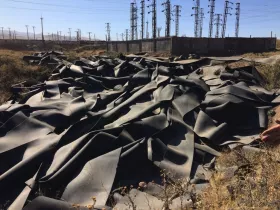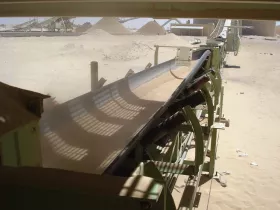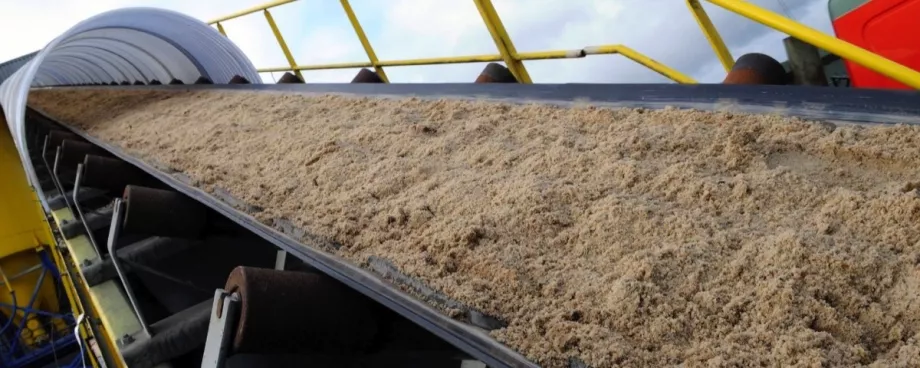It's all about the Quality

The wear resistant quality of the outer covers of a conveyor belt is the biggest single influence on the working life of the belt and consequently its ‘whole life’ economic cost. The rubber used for the outer covers usually constitutes at least 70% of the overall thickness of both multi-ply and steelcord belts. This makes the cost rubber the single biggest element of cost when manufacturing a conveyor belt. Consequently it is therefore the single biggest opportunity for manufacturers to minimise costs and to compete for orders based on price rather than quality and performance. From the buyers point of view, although the price of a belt may be 30% lower than other offers, if it wears out 30% faster then it really is not such a bargain after all.
Two of the most common methods used to minimise rubber costs are using recycled rubber, usually of highly questionable origin, within the mix and the use of cheap ‘bulking’ fillers such as chalk to replace part of the rubber polymers in the rubber compound. There are a great many different types of rubber compound used because modern-day belts have to deal with a multitude of different (and often combined) demands. Because of its adaptability, most of the rubber used in conveyor belting is synthetic. Literally hundreds of different chemical components and substances are needed to create these synthetic rubber compounds that, once vulcanized, are able to meet the specific physical performance and safety requirements.
Different Kinds of Wear and Tear

It is a common misconception that a belt specified by a supplier as being ‘abrasion resistant’ should naturally be expected not to wear quickly. Different causes of wear and abrasion require different kinds of abrasion resistant covers. For example, belts that transport heavy and/or sharp objects such as rocks, timber or glass that cause cutting and gouging of the belt surface need different resistance properties compared to belts carrying ‘fine’ materials such as aggregate, sand and gravel, which literally act like a piece of coarse sandpaper that is constantly scouring the rubber cover.
As a general rule, 80% of conveyor belt surface wear occurs on the top cover of the belt with approximately 20% of wear on the bottom cover. Wear on the top cover is primarily caused by the abrasive action of the materials being carried, especially at the loading point or ‘station’ where the belt is exposed to impact by the bulk material and at the discharge point where the material is effectively ‘accelerated’ by the belt surface. Contrary to popular belief, short belts (below 50 metres) usually wear at a faster rate because they pass the loading and discharge points more frequently compared to long belts. For this reason, the selection of the correct type of cover quality and the thickness of shorter length belts becomes even more important than usual.
Wear on the bottom cover of the belt is mainly caused by the friction contact with the drum surface and idlers. The rate and uniformity of this type of wear can be adversely affected by many other factors such as misaligned or worn drums and idlers set at incorrect angles. Other factors such an unclean environment where there is a build up of waste material can accelerate wear. Belt cleaning systems, especially steel edged scrapers, can also cause wear to the top cover surface.







